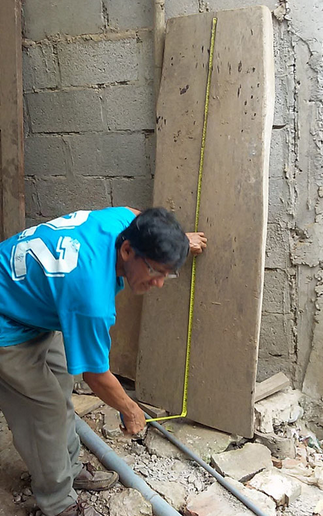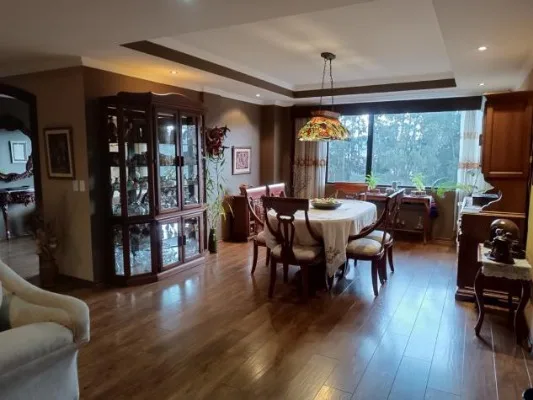A daunting challenge for expats is converting archaic U.S. measurement systems to metric

Quick conversion of inches to centimeters takes some getting used to.
They came upon me slowly, despacito, like a foreign language, pacito a pacito, one millimeter at a time.
Although at first these centimeters and millimeters sounded more like the names of poisonous insects than construction dimensions. When I went to buy building materials in Ecuador, I had to refer to my dual metric/imperial tape measure to visualize the sizes: “Let’s see…” I’d scratch my head and stretch out the tape to envision the width of a 50-centimeter tile.
buy building materials in Ecuador, I had to refer to my dual metric/imperial tape measure to visualize the sizes: “Let’s see…” I’d scratch my head and stretch out the tape to envision the width of a 50-centimeter tile.
It matched up, roughly, with 19 and 3/8th of an inch. “Weird size for a tile,” I thought. I’d ask the clerk, how many tiles in a square meter? The clerk looked at me as if I were joking, or maybe just stupid, “Why four tiles, señor, four, 50-centimeter tiles in a square meter.”
Oh. Yeah, a meter equals 100 centimeters, yup, two tiles in each direction. “No joke son, sorry — just stupid.”

Measuring get tougher when you have to be absolutely precise.
Slowly, with my handy translation tape measure in hand, I began to see things in meters. A standard countertop measured 60 centimeters, almost 24-inches. That’s about right, countertops in the U.S. measure 24-inches. Ok, I get it.
A meter’s sort of a yard and change, almost 40-inches. “So… how many roughly 40-inches in three-meters?” You can see how the metric to imperial conversion became too complicated to keep up indefinitely.
I needed to learn to think in the Ecuadorian measurement language — which just happens to be the lingua franca for measurements in almost all of the world outside of the U.S.
Going native with dimensions
As I began to accept local dimensions, trying to visualize meters and centimeters by reference to standard size objects around me, the lingo of local construction math became easier and easier. Eventually, it became easier than it had ever been back in the U.S.
You see, only three countries in the entire world have stuck staunchly to the imperial system — based on the absurd standard of the length of some British Monarch’s foot, from heal to toe. Those three countries include Liberia, Myanmar, and the United States.

How many pounds of tomatoes are in a kilo?
Not even in the United Kingdom, where they invented feet and inches, do these units persist. It’s just too complicated to think in base 12, where one foot is 12 inches, and two-feet are 24-inches, three are 36-inches, 48-inches, 60-inches, etc. It’s like memorizing the multiplication tables.
Much simpler to think in base ten.
In base ten, 100 centimeters equal one meter, 200 equals two, 300, equals three. Millimeters are just as easy, how many millimeters in a centimeter? 10. How many in a meter, 1000. How many meters in a kilometer? 1000. How many 50-centimeter square tiles in square meter? Four! The tiles in my office are 50-centimeters, and by starring at them, I internalized the feel of a meter just as I once internalized the length of a foot or a 16-inch stud bay by using it daily.
A sense of space
You best learn a language from direct experience. Burn your hand while your mom yells “hot,” and you never forget the word. You can learn metrics the same way, although you don’t get burned in the process. Just look at metric measurements until you become familiar with the feel.

What was that length again?
A 100-square meter-home, it’s small but livable (roughly 1,075 square feet); a 1000-square-meter home, oh man, that’s huge! Roughly 11,000 square feet.
A comfortable home, about 300-square-meters, or roughly 3,200-square-feet. If the house costs $750 a square meter, it will cost you $225,000, or about, $70 a square foot – good price.
Lost in translation
During the 1970s and 1980s, the U.S. tried to move toward metrics. While it’s too bad it failed, the problem came because we continued to use rounded imperial sizes as standard sizes, making the conversion mind-bogglingly complex. A simple 4-foot x 8-foot sheet of ½-inch drywall became 1.22 mts. x 2.44 mts. x 12.7 mm. Nobody wanted to deal with that!
If all standard sizes are rounded off into meter increments, say (2 mts. x 3 mts. for sheet goods) then construction calculations for doing takeoffs for estimates and ordering materials rely on elementary school arithmetic that doesn’t require a powerful Construction Master scientific calculator to workout.
Some other measurements in which the U.S. is out of step with the rest of the world:
- International System of Units (SI).
- Celsius temperature scale. (At 100-Celsius water boils, and at zero it freezes — simple!)
- DMY or YMD date format. (Why do we write the month then the day and year? Most of the world use the day, month, year – which makes more sense!)
- 24-hour clock when written. (Why do we use the numbers twice when telling time, making it necessary to specify if it’s AM or PM? Much easier, and more accurate, to use the 24-hour clock, that runs 12, 13, 14, 15, 16, etc. For example, 6:00 PM becomes 18:00. The U.S. Army figured this out years ago but civilians have been slow on the draw.
- Monday as the first day of the week. The work week starts on Monday. Why not the whole week, as it does in most the world? According to international standard ISO 8601, Monday is the first day of the week. It is followed by Tuesday, Wednesday, Thursday, Friday, and Saturday. Sunday is the 7th and final day. Sunday, after all, is part of the weekend. You may be surprised that the U.S. remains an outlier on this, too — only the U.S., Canada, and Australia consider Sunday as the start of the week.
_____________________
Born in Argentina, Fernando Pagés Ruiz spent most of his life in the U.S. before moving to Guayaquil five years ago. He writes for several U.S. building trade magazines and is the author of three books.

















